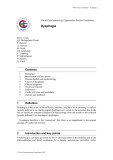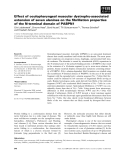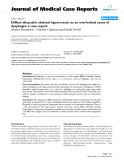
Causes of dysphagia
-
Document introduction of content: Definition, introduction and key points, disease burden and epidemiology, causes of dysphagia, clinical diagnosis, treatment options, references, useful web sites and guidelines.
 14p
14p  vovanvovan2013
vovanvovan2013
 13-05-2016
13-05-2016
 43
43
 2
2
 Download
Download
-
Oculopharyngeal muscular dystrophy (OPMD) is an autosomal dominant disease that usually manifests itself within the fifth decade. The most prom-inent symptoms are progressive ptosis, dysphagia, and proximal limb mus-cle weakness. The disorder is caused by trinucleotide (GCG) expansions in the N-terminal part of the poly(A)-binding protein 1 (PABPN1) that result in the extension of a 10-alanine segment by up to seven more alanines.
 10p
10p  inspiron33
inspiron33
 23-03-2013
23-03-2013
 50
50
 4
4
 Download
Download
-
Tuyển tập báo cáo các nghiên cứu khoa học quốc tế ngành y học dành cho các bạn tham khảo đề tài: Diffuse idiopathic skeletal hyperostosis as an overlooked cause of dysphagia: a case report
 3p
3p  dauphong1
dauphong1
 21-12-2011
21-12-2011
 59
59
 4
4
 Download
Download
CHỦ ĐỀ BẠN MUỐN TÌM
















